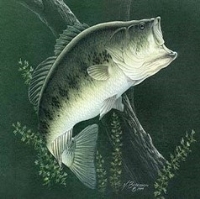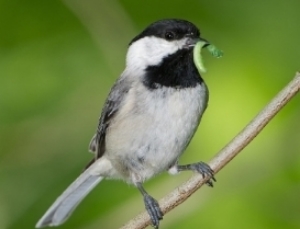Why do these guys care about pollinators?
Large Mouth Bass, Grizzly Bear and Carolina Chickadee
Largemouth bass switch from a diet of mostly insects to a diet of fish and other larger prey when they reach about 8 inches.
White bark pine nuts give grizzlies a critical meal as they start to fatten up for hibernation.
White Bark Pine
White pine blister rust and the mountain pine beetle have devastated swaths of White bark pine forests eliminating the production of the pine nut and because of this the bears remain on the endangered species list.
Miller-the adult of the army cutworm
The most common moth in the west is called the miller and it is the adult of the army cutworm.
Army cutworm moths migrate to mountain regions each summer to feed at night on the nectar of alpine and subalpine flowers, and during the day they seek shelter under various rock formations.
It is estimated that some 40,000 moths per day can end up in the stomach of a hungry bear. While fat in the diet is not the best thing for humans, it is important to bears. A single moth has a high enough fat content that it accounts for as much as a half a calorie. That means that 20,000 calories of just moths per day can be consumed by a rock-turning grizzly bear.
Like 96% of the terrestrial birds in North America, Carolina Chickadees rear their young on insects. Not just any kind of insect but caterpillars, the larvae of moths and butterflies.
Because Chickadees raise their young on caterpillars, there will be no Chickadees where the are no caterpillars or not enough caterpillars. An ecosystem that produces almost enough caterpillars just won’t do.
How many caterpillars are enough? Depending on the size of her clutch a Carolina Chickadee will bring between 390-570 caterpillars to her nest daily. She will feed her babies for 16-18 days so this means she will need to find 6,240-10,260 caterpillars to raise a single clutch of chicks
That’s just the number of caterpillars for one bird of one species in one nesting season. Pollinators are so important to all stages of life, not just for human food crops.
Although Chickadees nest in the canopy of trees they move to meadows in the fall and winter to eat seeds. Chickadees would not make it through the winter without the bounty of seeds a meadow or prairie offers.








